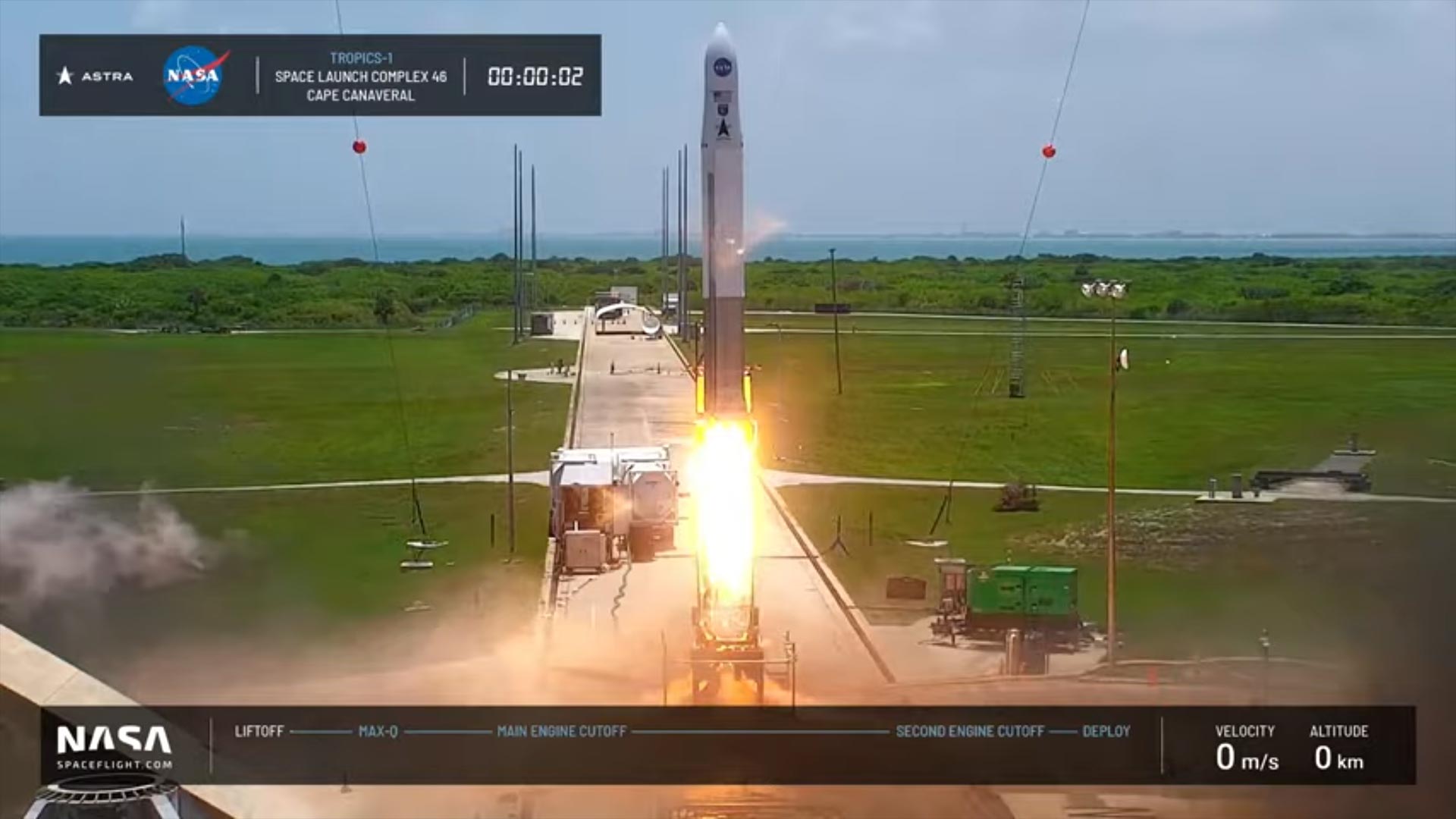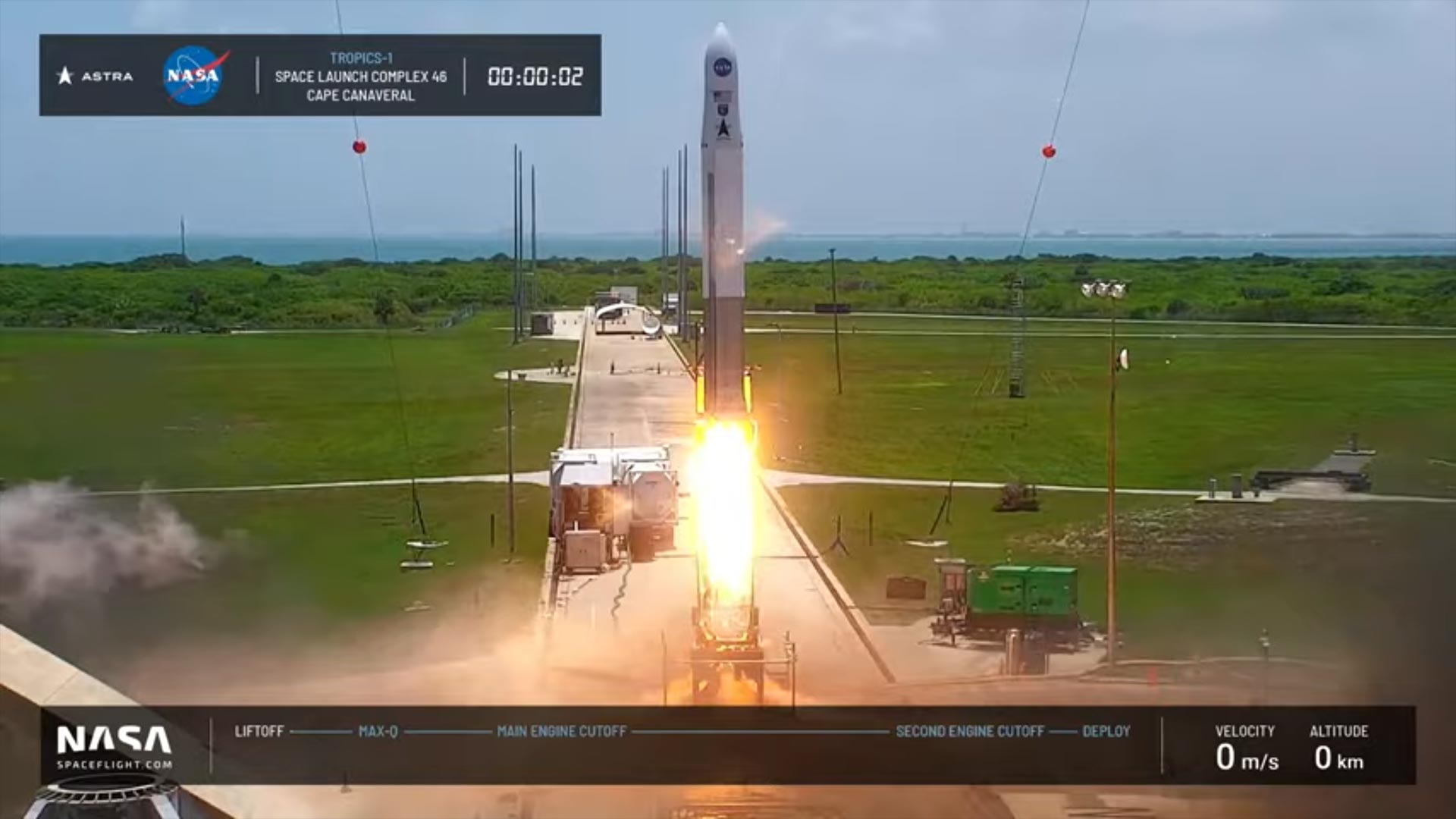
Dua TROPICS CubeSats meluncur di atas roket Astra Rocket 3 dari Space Launch Complex 46 di Cape Canaveral Space Force Station. Kredit: NASASpaceflight/Astra
Soon after the failure, Astra tweeted: “We had a nominal first stage flight. The upper stage shut down early and we did not deliver the payloads to orbit. We have shared our regrets with @NASA and the payload team. More information will be provided after we complete a full data review.”

Three pairs of satellites comprise the TROPICS constellation and will work in concert to provide microwave observations of storms on Earth, measuring precipitation, temperature, and humidity of a storm as often as every 50 minutes. Credit: NASA
NASA reports that while they are disappointed in the loss of the two TROPICS CubeSats, the mission is part of NASA’s Earth venture program, which provides opportunities for lower-cost, higher-risk missions. Despite a loss of the first two of six satellites, the TROPICS constellation will still meet its science objectives with the four remaining CubeSats distributed in two orbits. With four satellites, TROPICS will still provide improved time-resolved observations of tropical cyclones compared to traditional observing methods.
TROPICS is an Earth venture mission — science-driven, competitively selected, low-cost missions that provide opportunity for investment in innovative Earth science to enhance our capability to better understand the current state of the Earth system and to enable continual improvement in the prediction of future changes.

A camera on the rocket shows an exhaust plume at the time the engine shut down early. Credit: NASASpaceflight/Astra
As the agency works with emerging launch providers for cost-effective launch capabilities to space, these types of missions are important to expand our scientific knowledge while fostering the U.S. commercial launch industry.
As a Federal Aviation Administration (FAA) licensed mission, the FAA and Astra will lead the investigation to understand what happened during the TROPICS-1 launch. NASA will lend any expertise needed but would expect to pause the launch effort with Astra while an investigation is being conducted to ensure we move forward when ready.
NASA’s Launch Services Program, which is managing the launch service for the mission, continues to work with emerging launch providers to deliver low-cost science missions into orbit with contracts that align with commercial practices, using less NASA oversight to achieve lower launch costs. Small satellites and Class D payloads tolerate relatively high risk and serve as an ideal platform for technical and architecture innovation, contributing to NASA’s science research and technology development.
Thanks to the transparency displayed by Astra, NASA has been involved in the investigation of Astra’s previous launch. Additionally, we have been engaged in discussions about lessons learned and corrective actions. We recognize the risks inherent in a new launch provider and will lend our assistance as needed.
NASASpaceflight dan Astra bermitra untuk menyiarkan peluncuran misi ini.

“Spesialis budaya pop. Ahli makanan yang setia. Praktisi musik yang ramah. Penggemar twitter yang bangga. Penggila media sosial. Kutu buku bepergian.”

/s3/static.nrc.nl/images/stripped/2407spobadminton.jpg)





More Stories
Mengkompensasi tidur di akhir pekan dapat mengurangi risiko penyakit jantung hingga seperlimanya – studi | Penyakit jantung
Seekor sapi laut prasejarah dimakan oleh buaya dan hiu, menurut fosil
Administrasi Penerbangan Federal meminta penyelidikan atas kegagalan pendaratan roket Falcon 9 SpaceX